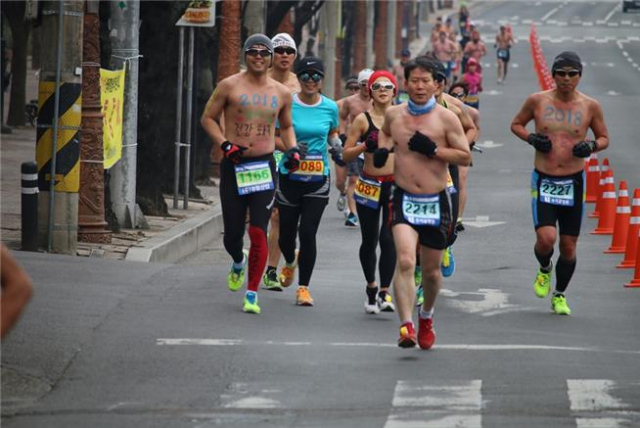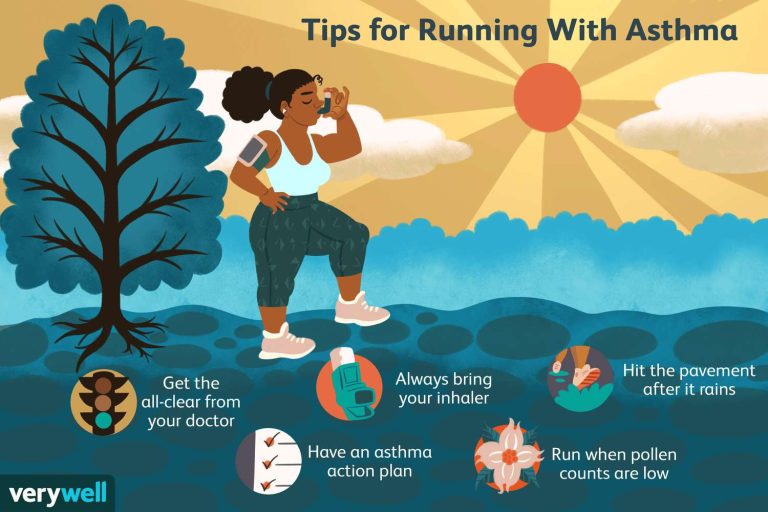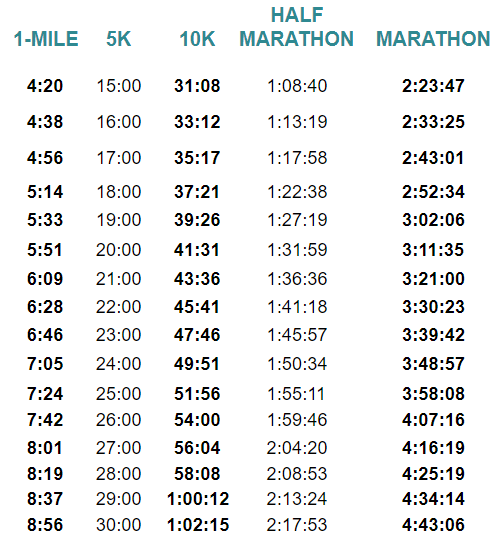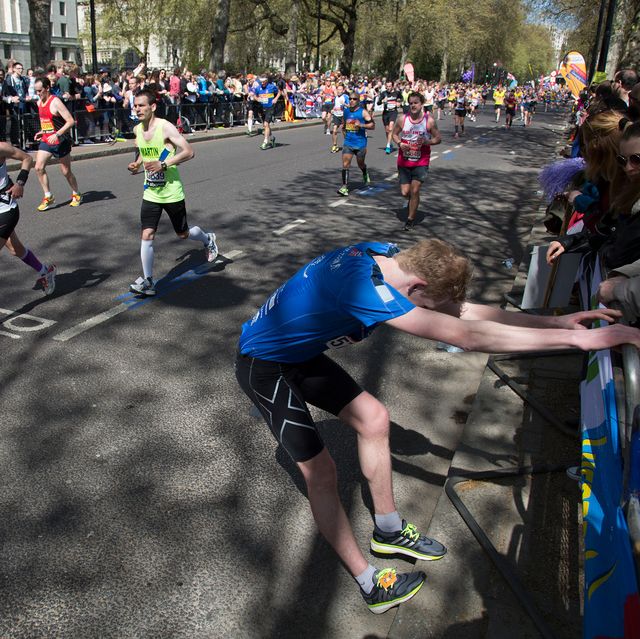Can You Run Marathon Shirtless
Yes, it is acceptable to run a marathon shirtless, as long as the event does not have any specific dress code guidelines. Running shirtless can offer some benefits such as improved heat dissipation and increased freedom of movement.
However, before making the decision to run without a shirt, it is crucial to consider factors like personal comfort, weather conditions, and potential chafing issues. Proper hydration, sun protection, and body glide application can help ensure a successful shirtless marathon experience.
So, if you’re comfortable and conditions are favorable, feel free to ditch the shirt and enjoy your run!
The Benefits Of Running Shirtless
Maximizing Comfort
Running shirtless allows free movement of your body while running, enhancing comfort.
Experience the lightness and flexibility of running without the restrictions of a shirt.
Reducing Chafing And Overheating
Say goodbye to chafing by running shirtless, as there are no clothing seams to rub against your skin.
Prevent overheating by allowing better airflow to your body, keeping you cool during your run.

Credit: koreabizwire.com
Considerations Before Running Shirtless
Before considering running a marathon shirtless, it’s important to account for potential factors. Weather, sun protection, and personal comfort should all be carefully evaluated before deciding to run without a shirt. Reflecting on these considerations can help ensure a successful and comfortable experience.
Sun Protection
When considering whether to run marathon shirtless, sun protection is a crucial factor to take into account. Exposing your skin to direct sunlight for a prolonged period of time can lead to harmful consequences, such as sunburns and an increased risk of skin cancer. Protecting yourself from the sun’s harmful rays should be a top priority. There are a few steps you can take to ensure adequate sun protection while running shirtless: 1. Apply sunscreen: Before heading out for your run, generously apply a broad-spectrum sunscreen with a high SPF to any exposed areas of skin. Make sure to reapply every two hours or as directed on the sunscreen packaging. 2. Seek shade: Plan your running routes where you can have some shade or cover from trees or buildings. This will help minimize direct sun exposure and reduce the risk of sunburn and overheating. 3. Wear a hat: Protect your face, scalp, and eyes from the sun by wearing a lightweight, breathable hat. Opt for a wide-brimmed hat that provides additional shade and covers vulnerable areas. 4. Consider UV protective clothing: If you want to enjoy the freedom of running shirtless without compromising sun protection, consider investing in UV-protective clothing. These garments are specifically designed to block harmful UV rays while keeping you cool during physical activities. Ultimately, running shirtless can be a liberating experience, but it’s essential to prioritize sun protection to keep your skin safe from the sun’s damaging effects.Local Regulations
Before ditching your shirt and hitting the pavement, it’s crucial to familiarize yourself with the local regulations regarding running shirtless. While running shirtless might be acceptable and common in some areas, other jurisdictions may have specific rules in place that prohibit or restrict this practice. To ensure compliance and avoid any potential legal consequences or social backlash, here are a few points to consider: 1. Research local ordinances: Check your local government’s website or contact the relevant authorities to determine if there are any regulations regarding running shirtless in public spaces. This will help you stay informed and abide by the rules. 2. Consider cultural norms: Different cultures and communities may have varying expectations when it comes to running attire. While some may view running shirtless as a normal practice, others might find it inappropriate or offensive. Respect the cultural norms of the area where you plan to run. 3. Respect private property: Running shirtless might be permissible in public spaces, but it’s crucial to respect private property rights. Avoid running shirtless in private areas where it might be considered trespassing or offensive to the property owners or residents. By being mindful of local regulations, respecting cultural norms, and protecting yourself from the sun’s harmful rays, you can make an informed decision about whether running shirtless is appropriate and safe in your specific situation. Remember to prioritize both your comfort and the well-being of those around you.Tips For Running Shirtless
Gradually transitioning into running shirtless is essential for a comfortable and injury-free experience. Your body needs time to adapt to the increased exposure to the elements, especially if you typically run with a shirt. A gradual approach allows your skin to adjust to the increased sun exposure and helps prevent skin irritation and sunburn. Start with shorter runs without a shirt and gradually increase the duration or distance as your body becomes accustomed to running shirtless.
Protecting your skin from the sun’s harmful rays is crucial when running shirtless. The absence of clothing exposes your skin to direct sunlight, making it vulnerable to sunburns and long-term damage. Apply a sweat-resistant sunscreen with a high SPF rating, preferably above 30, to all exposed areas of your body. Remember to reapply every couple of hours or as directed by the product instructions.
Staying hydrated is crucial when running shirtless, as the exposed skin can quickly lose moisture due to increased evaporation. Make sure to drink enough water before, during, and after your runs to replenish the fluids lost through sweat. Carry a water bottle or plan your route around water fountains to ensure easy access to hydration throughout your run.
Choosing the right moisture-wicking apparel can help keep you comfortable and sweat-free during your shirtless runs. Opt for lightweight, breathable fabrics designed to wick moisture away from your body. These materials will help keep you cool by allowing heat and sweat to escape, preventing discomfort and potential chafing.
When planning your running routes, consider the terrain you will be running on. Running shirtless exposes your skin to various surfaces, including asphalt, concrete, and trails. Pay attention to the temperature of the ground as it can become uncomfortably hot, potentially causing burns or blisters. Choose routes with shaded areas or opt for trails with softer surfaces whenever possible.
Running shirtless can be a confidence booster and an opportunity to embrace body positivity. Remember that everyone’s journey is unique, and what matters most is your determination, effort, and overall health. Embrace your body and be proud of all the progress you have made!

Credit: www.irun.ca
Etiquette And Respect In Shirtless Running
Shirtless running during a marathon is socially acceptable, but it’s crucial to prioritize etiquette and respect for fellow runners and spectators. Ensure you follow the event’s guidelines and consider weather conditions before deciding to run shirtless. It’s important to strike a balance between personal comfort and respect for others while running shirtless in a marathon.
Being mindful of others is crucial when considering running shirtless. Respect event rules to ensure a positive running experience.Being Mindful Of Others
Always be considerate of others when choosing to run shirtless. Keep in mind that not everyone may be comfortable with this choice. Practice empathy and understand that some people may feel uncomfortable or distracted by shirtless runners. When running shirtless, choose appropriate locations where it is socially acceptable and less likely to offend others.Respecting Event Rules
Check event guidelines on attire before deciding to run shirtless. Respect the rules set by the organizers. Ensure that running shirtless is allowed in the specific event you are participating in. Failing to comply can lead to disqualification. If running shirtless is prohibited, consider wearing appropriate attire out of respect for the event and fellow participants.Conclusion And Personal Choice
Balancing Comfort And Respect
When deciding whether to run a marathon shirtless, it’s important to find a balance between personal comfort and respect for fellow runners and event participants.
While running shirtless may be comfortable for some individuals, it’s essential to consider the norms and expectations of the race environment.
Establishing a respectful and considerate approach can ensure that everyone feels comfortable and respected throughout the marathon experience.
Embracing Individual Preferences
Ultimately, the decision to run a marathon shirtless is a personal choice that should be embraced based on individual preferences. Whether an individual prefers the freedom and comfort of running without a shirt or chooses to adhere to customary attire, both choices should be respected.
By embracing and respecting individual preferences, runners can create an inclusive and welcoming environment at marathons, allowing everyone to participate in a manner that aligns with their personal comfort and preferences.

Credit: www.alamy.com
Frequently Asked Questions Of Can You Run Marathon Shirtless
Can I Take My Shirt Off In A Marathon?
Yes, you can take your shirt off in a marathon. It is allowed and common for runners to remove their shirts during the race. Remember to check the specific rules of the marathon you are participating in, as some events may have their own dress code requirements.
Can I Run A Race Shirtless?
Yes, you can run a race shirtless as long as the event allows it. It’s important to check the race rules beforehand.
Is There A Dress Code For Marathon?
There is no specific dress code for marathons. Wear moisture-wicking clothing and comfortable shoes for performance and comfort.
Conclusion
Running a marathon shirtless is a personal choice based on comfort and confidence. Listen to your body’s needs and abilities. Enjoy the freedom and connection to nature it can provide. Embrace your individuality while respecting event guidelines. Stay mindful of sun protection and good running hygiene practices.






